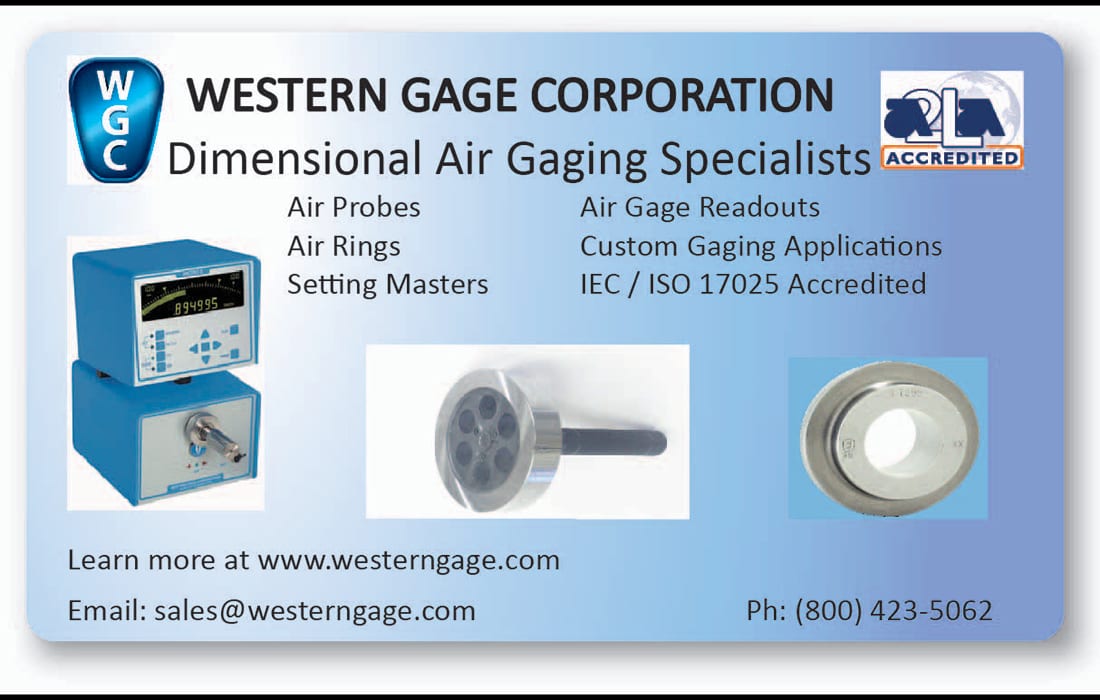Other Dimensions
Hill Cox
Other Dimensions | Hill Cox
One of the hardest parts of doing your own gage calibration is having the right personnel to do the work.
DIY Gage Calibration:
A Primer for Management

Many company owners or managers are frequently asked by staff to consider bringing gage and instrument calibration in-house. It can be difficult for managers to evaluate such requests beyond the usual cost/benefit considerations as the technical elements to it all can create a functional nightmare.
One reason often used in such requests is delivery times using outside sources, something that could be fixed by trying a different source. Technical competence is another reason after endless arguments over measurements from alternate sources. In this case it could be that your company has requirements unlike anyone else or your staff has unrealistic expectations of what is ‘standard’ with respect to what is offered by one or more labs. An example of this could be that your staff can’t find a lab whose uncertainty is what they believe is needed for your work. It could be that what they want is beyond today’s technical reality and should be reviewed.
When costs are cited as grounds for an in-house capability, proponents often forget to include overhead costs when making comparisons, or the costs of maintaining recognition of such an operation which can be substantial. Unfortunately, your ISO 9000 recognition is not suitable. Most quality standards expect gage calibration to be done via an accredited facility but you may think that since you are doing it for your own use, you don’t need to bother with this.
You could be wrong as agencies that accredit laboratories to ISO 17025 – the standard that covers it all - usually have a category for such situations. This type of accreditation may have some of the general requirements watered down but not the technical competence ones. This means you will be paying a few thousand dollars a year for the accreditation depending on the extent of your scope. To this must be added the costs of an agency approved assessment every other year plus an annual internal audit of a similar nature.
You’ll still be getting into arguments over measurements but now they’ll be over smaller numbers.
One item frequently overlooked when setting up a calibration facility is some sort of technical file(s) containing the standards you will be working to. I’m referring to standards published by ASME that directly relate to the items you will be calibrating. Lab assessors expect to see original documents—not photocopies of certain pages—and a system for controlling them.
My recent columns have given an outline of the equipment required for calibrating gages, most of which is the sort of hardware you’re unlikely to have on hand so some up-to-date quotations are needed. To the purchase cost you must add the cost of having each device calibrated by a lab that is accredited to ISO 17025 to do these specific devices if you intend on complying with this standard. Your ongoing cost of operation will be saddled with this cost every year.
Thread wires, setting masters, gage blocks and other accessory items used with your equipment will require similar calibration initially and on an annual basis thereafter. This can add up to a rather chunky bit of change so make sure the person putting the budget together for you includes these costs.
The workspace for all these items will have to meet a number of requirements to pass a technical assessment of your capability beyond enough space to work with it all. They include temperature control as close to 20⁰C as you can maintain it with relative humidity of about 40% when people are actually working in the room/area. Temperature stability is a key element to this which means a continuous recording of temperature is required so you can prove you’ve got the environment under control.
Personnel to do the work is one of the hardest parts of doing your own gage calibration as it requires people with skills beyond the norm. Yes, there are some training programs that cover metrology and while they cover all the basic rules of the game that pertain to many types of measurement, you need people who are more than just instrument readers. They must have experience working to a high level of precision with the type of equipment you will be acquiring.
I hope this will ensure you come up with a realistic cost of what you’re getting into. Yes, you’ll still be getting into arguments over measurements, but now they’ll be over smaller numbers.

